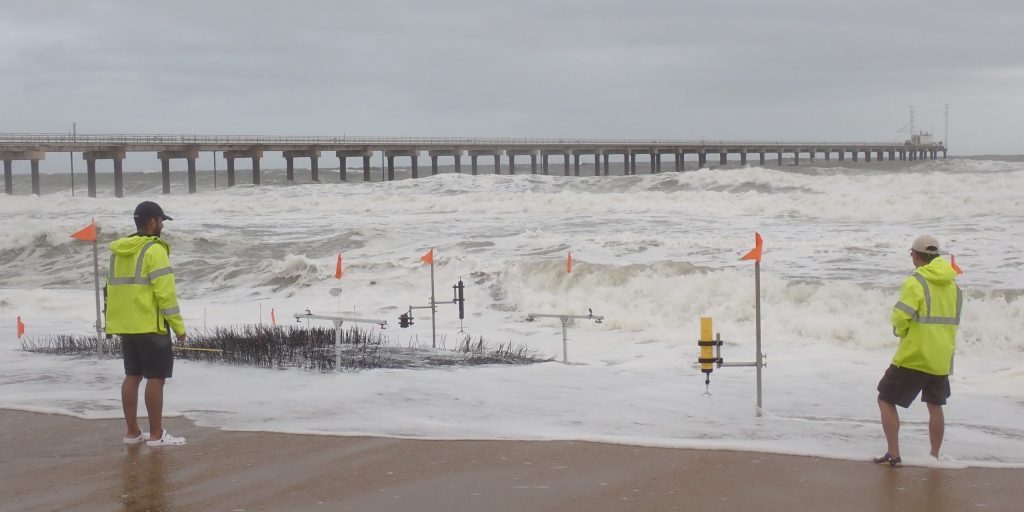DUCK, N.C. – As the 2023 hurricane season begins, participants in the U.S. Coastal Research Program (USCRP)-supported During Nearshore Event Experiment (DUNEX) are hard at work to analyze their collected data and share their results with other coastal researchers and the broader coastal community.
A multiagency, collaborative initiative to study coastal processes during coastal storms, DUNEX was designed to improve basic understanding, predictive capabilities, and observational technologies for extreme coastal storm impacts while supporting effective communication between scientists and the coastal community.
“To better protect our coastal communities, we need to better model, understand, and predict the complex and dynamic nearshore environment,” said Dr. Brittany Bruder, a research oceanographer with the U.S. Army Engineer Research and Development Center’s (ERDC’s) Coastal and Hydraulics Laboratory (CHL). “This requires real-world measurements across a wide range of distances, durations, and disciplines. DUNEX is an excellent opportunity for researchers to collaborate and share resources to achieve this and serve coastal communities.”


